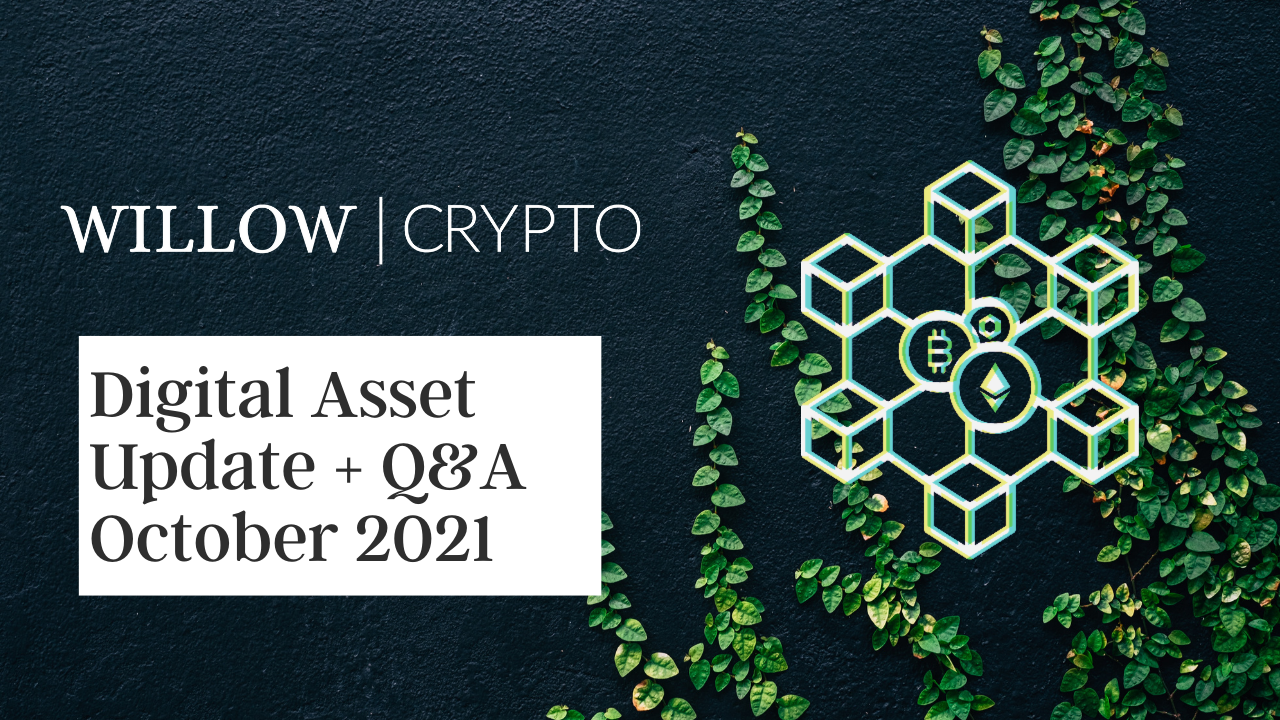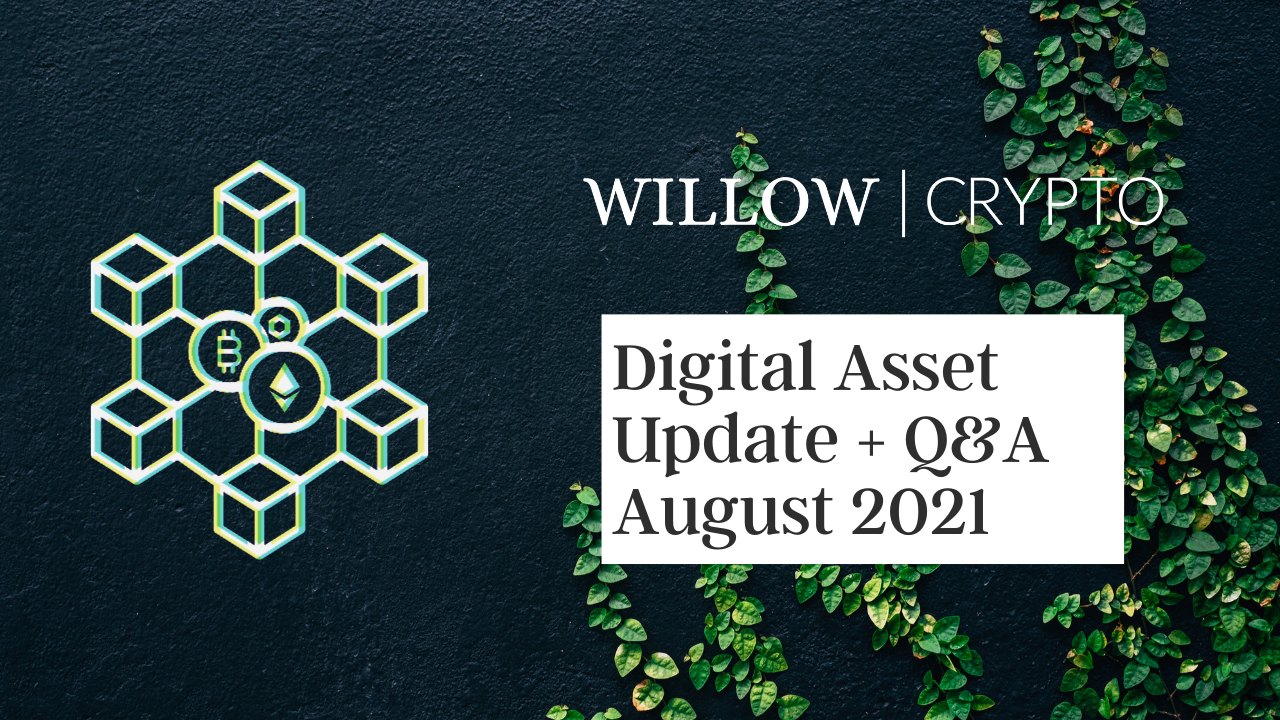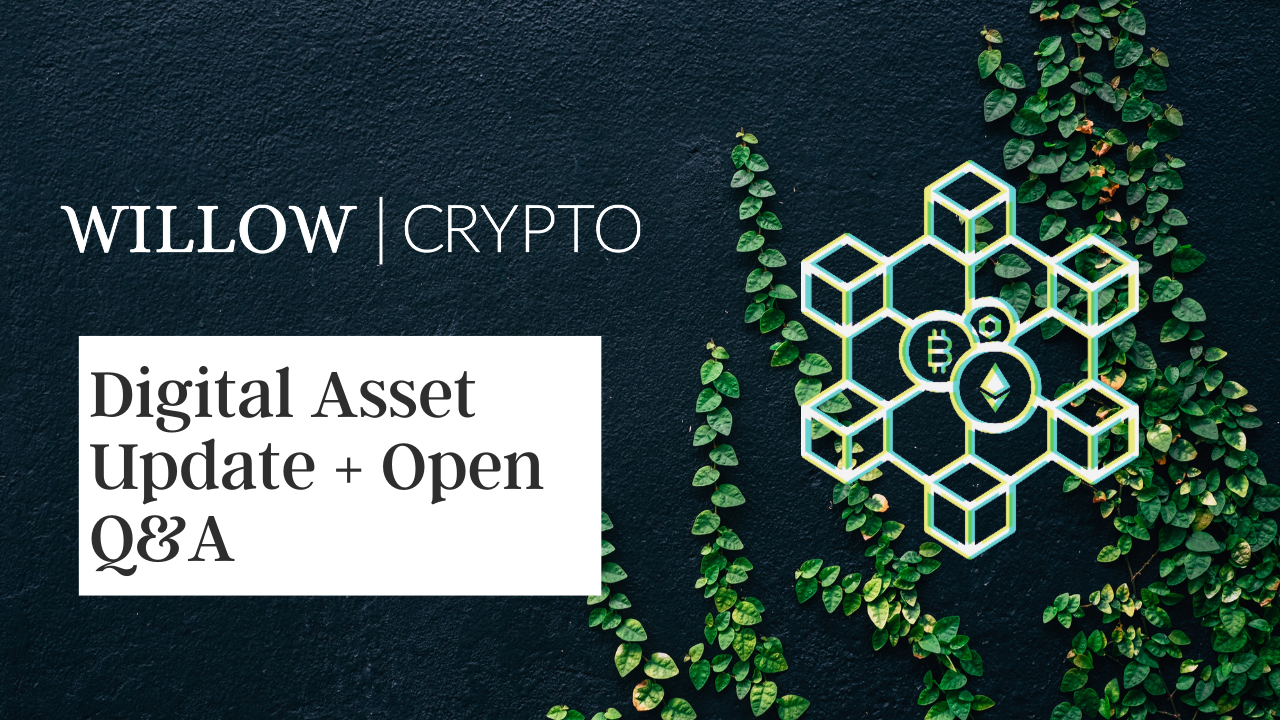Digital Asset Update | Setpember 2022
See below for our Digital Asset Update | September 2022 Summary points below the video.
Digital Asset Update | Setpember 2022 Video Overview:
0:50 The Merge | ETH
2:36 Crypto Crash | Bloomberg
3:39 Total Cryptocurrency Market Cap
4:48 In the News
7:21 Crypto Fees
8:51 Total Value Locked
9:34 Stablecoins
11:20 Stablecoin Volume
If you are interested in the Willow Crypto SMA, please click here or give us a call.
Best regards,
The Willow Team
+1 413 236 2980








